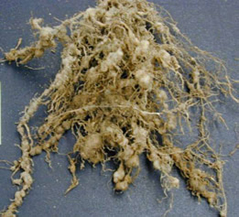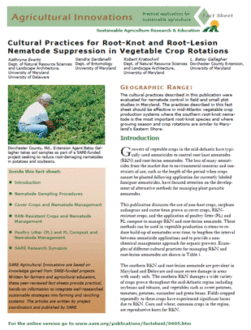
Proper management of root-knot and root-lesion nematodes begins with timely sampling of fields. Sampling soil in the spring is not reliable because few nematodes may be detected even in fields where the risk of potential damage is high. This is probably because inadequate degree-days have accumulated during the spring for nematode reproduction to occur. Samples collected in late summer or early fall are much more reliable. During the growing season, diagnostic samples may be taken whenever symptoms are observed.
Recommended sampling procedures are to collect soil cores or soil samples (if using a shovel) from a depth of 6-8 inches from at least 20 representative locations across the field. Soil core locations should target areas where the crop appears stunted, chlorotic or weak, and nematode damage is suspected. A field may be divided into sections for sampling purposes if either known or observed differences for nematode damage are present across the field. A minimum of one pint of soil is required per sample area for analysis. Root samples of both crop and weed plants that are present in the field should be submitted with the soil sample. Samples can be submitted to County Extension Educators or directly to either university or private nematode diagnostic laboratories for analysis.
Laboratory analysis will provide the proper identification of the plant-parasitic species and an estimate of the number of each nematode species that are present.
